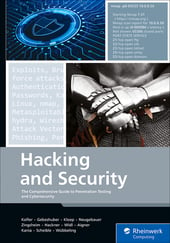In the rapidly evolving digital landscape, the security and integrity of user authentication systems have become paramount.
As technology advances, particularly in the realm of artificial intelligence (AI), so does the sophistication of methods used to breach these systems. The emergence of adversarial attacks – sophisticated techniques designed to deceive and manipulate AI-driven security measures – poses a significant challenge in the field of cybersecurity.
Understanding Adversarial Attacks
Adversarial attacks represent a significant and growing threat in the realm of digital security, particularly in user authentication systems. These attacks are specifically engineered to exploit vulnerabilities in AI algorithms, creating a unique challenge for cybersecurity professionals. To understand these threats fully, it is essential to delve into their nature, the various types they encompass, and the direct impact they have on user authentication systems.
Nature and Types of Adversarial Attacks
Adversarial attacks are characterized by their stealth and sophistication. They involve the creation of inputs—be it images, audio, or other data types—that are deliberately designed to mislead AI systems. These attacks can be broadly categorized into two types: white-box attacks, where the attacker has complete knowledge of the AI system, and black-box attacks, where the attacker has no prior knowledge of the system's internals. Examples of such attacks include subtly altered images or voice recordings that can deceive facial or voice recognition systems, leading to unauthorized access or misidentification.
Impact on User Authentication Systems
The impact of adversarial attacks on user authentication systems can be profound. Successful attacks can lead to unauthorized access to sensitive data, compromising both individual privacy and organizational security. The case studies of such attacks reveal a disturbing trend of increasing frequency and sophistication, highlighting the urgent need for robust defense mechanisms. These attacks not only exploit technical vulnerabilities but also expose the limitations in the current understanding of AI systems and their interaction with adversarial inputs, underscoring the necessity for continuous research and development in AI security.
AI in User Authentication
The integration of AI into user authentication systems has marked a significant advancement in the domain of digital security. This development has not only enhanced the efficiency and accuracy of authentication processes but has also introduced a new level of sophistication in securing user data and access control. AI algorithms, with their ability to learn and adapt, have revolutionized traditional authentication methods, offering more personalized and secure experiences. These systems range from biometric recognition technologies, like facial and voice recognition, to behavioral analytics that monitor patterns in user behavior for signs of authenticity or fraud.
However, this technological evolution brings with it a unique set of challenges. As AI becomes more ingrained in authentication systems, the complexity and potential vulnerabilities of these systems increase. The advanced capabilities of AI in identifying and authenticating users also open new avenues for exploitation by malicious actors. Adversaries equipped with an understanding of AI algorithms and IP lookup capabilities can engineer attacks that specifically target the weaknesses in these systems. This dual nature of AI in user authentication – as both a tool for enhanced security and a target for sophisticated attacks – underscores the need for a deeper and ongoing examination of AI's role in cybersecurity, particularly in the context of protecting user identity and access.
AI-Based Defense Mechanisms
In response to the escalating threat of adversarial attacks in user authentication, AI-based defense mechanisms have emerged as a pivotal aspect of cybersecurity strategy. These defense mechanisms leverage the same advanced AI technologies that have been exploited by attackers, but in a way that fortifies systems against such vulnerabilities. AI-based defenses are designed to not only detect and neutralize adversarial inputs but also to adapt and evolve in response to new and emerging threats.
The cornerstone of these defense mechanisms is their ability to learn from interactions and attacks, enabling them to identify patterns and anomalies that may indicate a security breach. This involves advanced algorithms capable of deep learning and neural network training, which are tailored to recognize and respond to the subtleties of adversarial attacks. Furthermore, AI-based defenses incorporate proactive strategies, to anticipate and prepare for threats such as online survey scams.
By integrating these AI-driven solutions into authentication systems, organizations can enhance their security posture significantly. These mechanisms not only provide a robust layer of protection but also contribute to a more dynamic and intelligent security infrastructure. This approach to defense is essential in an era where adversarial threats are becoming more sophisticated and traditional security measures are no longer sufficient. AI-based defense mechanisms represent a cutting-edge approach to securing user authentication systems, ensuring that they remain one step ahead of potential attackers.
Future Directions and Challenges
As the landscape of user authentication and cybersecurity continues to evolve, driven by both technological advancements and the escalating sophistication of adversarial attacks, the future directions and challenges in this field are becoming increasingly complex and multifaceted. A forward-looking perspective is essential to anticipate and prepare for the next generation of threats and solutions in AI-based user authentication.
The future trajectory in this realm is expected to be shaped by a continuous arms race between advancing AI technologies and the evolving techniques of adversarial attackers. As AI systems become more intricate and integral to authentication processes, attackers are likely to develop more sophisticated methods to exploit these systems. This necessitates a relentless pursuit of innovation in AI-based defense mechanisms, focusing not only on countering current threats but also on predicting and preempting future vulnerabilities.
Conclusion
The journey through the various facets of this topic underscores the importance of understanding and countering adversarial attacks within AI-driven authentication systems. It highlights the need for continuous innovation in AI defenses, which are not just reactive but also proactive in anticipating future threats. Moreover, this discussion sheds light on the importance of balancing technological advancement with ethical and regulatory considerations, ensuring that the pursuit of security does not come at the expense of user privacy and rights.
Looking ahead, the field of AI in user authentication is set to evolve rapidly, facing both challenges and opportunities. The ongoing development of AI technologies and the escalation of adversarial threats will likely drive significant advancements in cybersecurity strategies. This evolution will require a collaborative effort from technologists, researchers, ethicists, and policymakers to ensure that AI-driven authentication systems are not only secure and resilient but also ethical and user-centric.




Comments